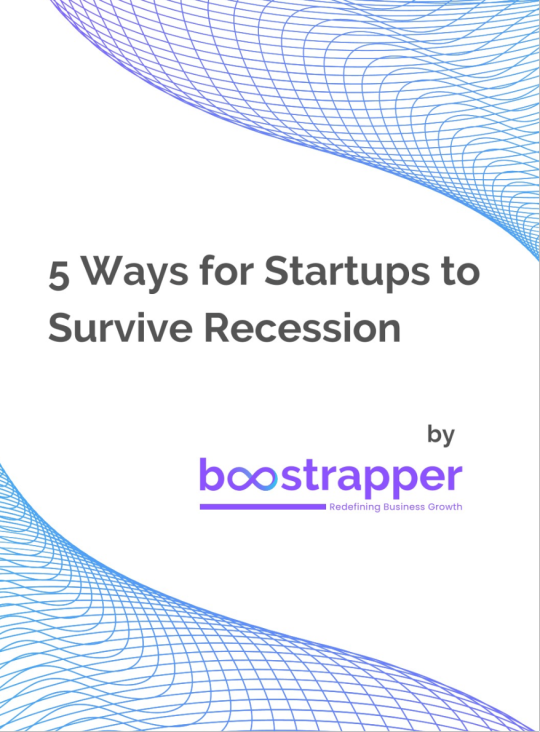#sustainable startup
Explore tagged Tumblr posts
Text
How to Start a Biodegradable Plastic Bags Manufacturing Business
Want to turn your passion for sustainability into a thriving business? 🌍💼 Learn how to launch a biodegradable plastic bags manufacturing business and make a positive impact on the planet! #BiodegradableBags #sustainablebusiness #ecofriendlybusiness
The biodegradable plastic bag industry aims to create eco-friendly substitutes for conventional plastic bags. Biodegradable plastic bags are made to degrade more quickly in natural environments than ordinary plastics, which can take hundreds of years to break down. Usually composed of plant-based materials like sugarcane or cornstarch, these bags have a smaller environmental impact because they…
#biodegradable plastic bags#biodegradable plastic bags business#biodegradable products#biodegradable products industry#eco-conscious entrepreneurship#eco-friendly business opportunities#eco-friendly manufacturing#environmental business opportunities#green business ideas#green technology business#how to start a biodegradable plastic bags business#manufacturing green products#new business ideas 2024#plastic alternatives#profitable green business#profitable manufacturing business#profitable small business ideas#start a business#sustainable entrepreneurship#sustainable packaging#sustainable packaging solutions#sustainable startup
0 notes
Text
We're looking for organizations, schools, universities, institutions, communities, that want to appropriate the Academy's tools and become Activators. They will be recognized as allies of UNEP's work on Sustainable Living and will have access to trainings and a network of likeminded organizations committed to a more sustainable future.
If you're interested in becoming an activator, please contact [email protected].
Your Journey as an Activator:
As you embark on your journey to become an Activator, you can expect continuous support and guidance from us. You will gain access to our network and various valuable tools, including the Learning Module and the Green Book of Nudges. Moreover, we present exciting opportunities for future collaborations.
Becoming an Activator:
To attain Activator status, follow these essential steps:
Step 1: Commit 10 Participants
Encourage and enroll a minimum of 10 individuals to engage with our Learning Module.
Step 2: Follow us on Instagram
Get your institution and 10 members of your community to follow @theofficialanatomyofaction on Instagram
Step 2: Certificate Confirmation
Provide the Sustainable Lifestyles Academy Team with the certificates of completion for these 10 participants, affirming their engagement in the module.
Step 3: Achievement Certification
Upon successful completion of the requirements, Sustainable Lifestyles Academy Activators will receive an official certificate recognizing their accomplishment.
Step 4: Engagement and Training
Activators are invited to participate actively in the academy's activities. Additionally, they have the opportunity to receive specialized training from the Sustainable Lifestyles Education (SLE) Team.
Step 5: University Edition Involvement
With a minimum of 100 participants, Sustainable Lifestyles Academy Activators can become part of the university edition of the My Sustainable Living Challenge.
Step 6: Stay Informed
Activators will receive a newsletter every two months, providing updates and insights into the happenings within the Sustainable Lifestyles Academy.
Thank you for your commitment to sustainable living and for considering the role of an Activator within the Sustainable Lifestyles Academy. Your dedication and contributions are instrumental in fostering responsible consumption and production for a better, more sustainable future.
For any questions or further assistance, please do not hesitate to contact [email protected].
#Sustainable Lifestyle#solarpunk#solarpunk business models#solarpunk business#solar punk#startup#community#education
8 notes
·
View notes
Text
Opened twitter and Nico is going to be a VC now? With the fund vale at $75Mn?
#he's pooling money from his rich European friends for investing#i have opinions......#but imo Nico was going to end up doing this at some point#waits to be seen what he will invest into#of course tech but given Nico's own history they might end up doing hard sciences too#I hope whatever sustainability startups he ends up investing into aren't halfway scams#nico rosberg#nr6#f1#formula 1
11 notes
·
View notes
Text

At WholeBranding, we have coined the term "Greentrich" to describe a common and damaging behavior exhibited by brands and organizations. They ignore sustainability practices and bury their heads in the ground when confronted with environmental or social challenges. This unacceptable behavior can severely affect the brand's reputation and the planet's well-being.
Organizations must adopt a proactive and assertive communication strategy for environmental and social concerns to combat this behavior. This includes acknowledging the challenges, setting ambitious sustainability goals, implementing eco-friendly practices, and engaging with all stakeholders to build a more sustainable future.
At WholeBranding, we believe in taking decisive action to address sustainability challenges.
Let's Brand & Shine together to explore all the possibilities and take bold steps towards a more sustainable future!
#wholebranding#sustainablebranding#sustainablemarketing#branding#startups#marketing#personalbranding#developers & startups#entrepreneurs#sustainable living
33 notes
·
View notes
Text

Making repair a mainstream -
SOJO : fashion needs a new fit.
Last week, I explored a fascinating startup based in London and founded by Josephine Philips.
The mission of Sojo is to make garments alterations and repairs accessible to everyone, promoting a more conscious approach to fashion.
In other words, restoring clothes offers a way to imagine a second life for our garments, allowing them to change and grow with us.
It’s a creative and straightforward idea to inspire people to adopt a different mindset and make a step forward from the “make-use-waste” default approach of fashion.
We express ourselves and our style through clothes (and accessories!). They’re part of us, and definitly our memories and culture.
So my question is : why too often it seems that we have so much trouble taking care of them?
#sojo#startup#london#repair#fashion#sustainability#garments#upcycling#creative#idea#mood#design#waste#studioriver#contemporary#fit
2 notes
·
View notes
Text


We are happy to announce that @radixnutritive® will be exhibiting its Gluten-free, Vegan and Millet product stack at Stall No 5, International Nutricereal Convention INCC 6.0 organized by Nutrihub, IIMR on 18th and 19th Oct 2024 at Novotel, HICC, Hyderabad.
Come and inspire us!!!
Stall No 5
📅 Dates: 18th & 19th October 2024
📍 Venue: Novotel, HICC, Hyderabad
Note: Free walk-in for all visitors from 3pm to 6pm
#glutenfree#millets#radixnutritive#vegan#checkitout#sustainability#sustainableliving#events#startups#convention
6 notes
·
View notes
Text
The Role of PR in Promoting Low-Carbon Innovation in the UK
PR and communications agencies have a crucial role to play in promoting low-carbon innovation in the UK. By showcasing these innovations and promoting sustainable practices, they can help businesses and institutions reduce their carbon footprint while also promoting their brand. This can help drive the transition to a low-carbon, regenerative economy and create a more sustainable future for all.
2 notes
·
View notes
Text
5 Ways for Startups to Survive Recession

Introduction
Major economic forecasting institutions and experts are predicting an economic recession as a series of complex real economic problems such as inflation, supply chain collapse and geopolitical risks have recently emerged one after another. The predicted recession is to put early stage startups at risk, directly. The less activities from VCs recently forced startups to prepare for all the scenarios.
While the current economic recession may present challenges for startups, it can also be an opportunity for them to demonstrate their resilience and adaptability. Here are some strategies that can help your startups that will not only improve your chances of survival but also to attain a healthier and sustainable future growth.
Here are five ways for a tech startup to navigate a recession:
1. Extend your cash runway
As a startup, it is essential to focus on extending your cash runway in order to ensure sustainability and success during recession. This involves making sure that you have enough cash on hand to cover your expenses and maintain operations for as long as possible. According to a survey by the National Venture Capital Association, 82% of startups that fail do so because of premature scaling, or expanding too quickly without adequate resources. By carefully managing your cash flow and taking steps to extend your cash runway, you can avoid this common pitfall and give your startup the best chance of success.

Here are three key steps to help extend your cash runway:
Get a clear overview of your financial standing: Understanding your current cash flow, liquidity, and forecasts is essential to extending your cash runway. You can track your cash flow by looking at your income and expenses on a regular basis. Your liquidity is a measure of how easily you can access your cash and convert it into other assets. You can measure your liquidity by looking at your current assets, such as cash and accounts receivable, compared to your current liabilities, such as accounts payable and short-term debt. Finally, your forecasts are estimates of what your future financial performance might be. You can create financial forecasts by analyzing your past financial data and making assumptions about future economic conditions.
Change approach from optimistic to conservative: By being more cautious in your spending and making more conservative assumptions about your future financial performance, you can reduce your expenses and increase your cash runway. This might include reducing your marketing budget, delaying hiring new employees, or negotiating better terms with suppliers.
Identify unnecessary cost drivers: Unnecessary cost drivers are expenses that are not essential to your business and can be eliminated or reduced. Common examples include unnecessary travel, excessive entertainment expenses, and unnecessary office supplies. By identifying and eliminating unnecessary cost drivers, you can free up cash that can be used to extend your cash runway.

2. Consider creative ways of cost cutting
To maintain financial stability and profitability, you should consider creative ways to cut costs. Although layoffs may seem like a good option at first, they should be considered as a last resort because they can negatively impact morale and productivity. In addition, layoffs come with associated costs such as severance pay and unemployment benefits, which can be both a financial and administrative nightmare. Instead, it is recommended to start with other cost-cutting measures before considering layoffs. Being creative with these strategies can help you achieve better long-term results.
Here are some of them worth considering:
Optimization: Find ways to do things more efficiently, such as streamlining processes, automating tasks, and using technology to improve productivity. By optimizing operations, businesses can reduce their costs without sacrificing quality or productivity.
Minimize operational costs: Another key strategy for cost cutting is to minimize operations costs. This includes finding ways to reduce expenses such as utilities, rent, and transportation. For example, businesses can negotiate lower rates with suppliers, adopt energy-efficient practices, and use public transportation instead of company vehicles. According to a survey by the National Small Business Association, 29% of small businesses reported that their top cost cutting strategy was reducing energy costs, and 27% said they reduced their travel expenses.
Reduce cost of goods sold (COGS): COGS refers to the direct costs associated with producing and selling products or services. By minimizing COGS, businesses can reduce their expenses and increase their profitability. This can be achieved through a variety of strategies, such as negotiating lower prices with suppliers, reducing waste, and finding more efficient production methods.
Stretch R&D projects timeframe: For businesses that rely on research and development (R&D) to innovate and stay competitive, stretching the timeline of R&D projects can be a cost-effective strategy. By taking more time to develop new products or technologies, businesses can spread out their R&D expenses over a longer period of time, which can help to reduce their overall costs.
3. Strategic Partnerships
Strategic partnerships are an important tool for growing startups. They help you to access new markets, share resources, improve competitiveness, and gain access to a wider network of industry contacts. Partnerships can help you save time and money and accelerate your growth by leveraging the resources and expertise of your partners. They can also help you differentiate yourself from competitors and gain a competitive edge in the market by leveraging the reputation and credibility of your partners. Overall, strategic partnerships can be an important part of your growth strategy and can help you succeed in the market. McKinsey & Company found that successful strategic partnerships can lead to a variety of benefits, including increased market access (cited by 74% of respondents), cost savings (cited by 67%), and access to new technologies (cited by 59%).

Here are three ways that you could:
Communicate with your key partners about how they are handling the downturn: Effective communication is key to the success of any partnership, and it's especially important during times of economic downturn. By staying in touch with your key partners and asking how they are handling the challenges of the current environment, you can better understand their needs and find ways to support each other.
Focus on building stronger relationships: In times of uncertainty, it's important to focus on building stronger relationships with your strategic partners. This means investing time and effort into understanding their business needs and goals, and finding ways to work together more closely. By building stronger relationships, you can create a sense of trust and mutual support that can help your business weather any economic challenges.
Consider new strategic partners to combine efforts for shared results: Another way to grow your tech business through strategic partnerships is to consider new partners who can help you achieve shared results. For example, you might look for partners who can help you access new markets, leverage new technologies, or bring new skills and expertise to your business. By entering into win-win agreements with these partners, you can combine efforts and achieve shared results that benefit both parties.

4. Pivot business model
During times of economic recession, it's important for businesses to be flexible and adaptable in order to survive and thrive. One key strategy for navigating these challenges is to pivot your business model, which involves making changes to the way your business operates in order to better meet the needs of the market.
Here are two key approaches to pivoting your business model and thriving during a recession include:
Adapt the current business model to the changing market needs: A key approach to pivoting your business model and thriving during a recession is to adapt it to the changing needs of the market. This could involve revising your product or service offerings, shifting your focus to new customer segments, or finding new ways to deliver value to your customers. Experts say, 70% of tech startups reported successfully pivoting their business model in response to the COVID-19 pandemic, resulting in increased revenue and market share. By proactively adapting your business model to the changing needs of the market, you can stay relevant and competitive in the face of economic challenges.
Identify new revenue streams: Another way to pivot your business model is to identify new revenue streams. This might involve exploring new business opportunities, such as offering new products or services, entering new markets, or finding new ways to monetize your existing offerings. According to a survey by the U.S. Census Bureau, 47% of small businesses reported introducing new products or services in response to the COVID-19 pandemic. By diversifying your revenue streams, you can reduce your reliance on any one source of income and improve the resilience of your business.

5. Use agencies to outsource business processes
Outsourcing certain business processes to agencies and freelance contractors can be an effective way to improve profitability and increase efficiency. According to a survey by the National Association of Small Business Owners, 41% of small businesses reported outsourcing at least one business function, with the most common functions being marketing, accounting, and human resources.
Here are three key benefits that outsourcing business processes can help a business improve profitability:
Avoid administrative burden: One of the main benefits of outsourcing business processes is that it allows businesses to avoid the administrative burden of managing these functions in-house. By outsourcing tasks such as marketing, accounting, and human resources, businesses can free up time and resources to focus on their core competencies and drive growth.
Work with agencies and freelance contractors: Another key advantage of outsourcing business processes is the ability to work with agencies and freelance contractors who have expertise in specific areas. For example, a marketing agency may have specialized knowledge and experience in social media marketing, while a freelance accountant may have a strong understanding of tax laws. By outsourcing these tasks to experts, businesses can ensure that they are receiving high-quality work and maximizing their profitability.
Attain flexibility to scale up or down as per uncertain market dynamics: In addition to avoiding administrative burden and accessing expertise, outsourcing business processes can also provide businesses with flexibility to scale up or down as needed. This is particularly important in times of economic uncertainty, when market conditions can change rapidly. According to a survey by the National Small Business Association, 52% of small businesses reported being negatively impacted by the COVID-19 pandemic, and 48% said that they had experienced a decline in sales. By outsourcing certain functions, businesses can quickly adjust their operations to meet the needs of the market, which can help to improve profitability.
Conclusion
It is crucial for businesses to take proactive steps to increase their chances of survival during a recession. This can be achieved through a combination of strategies, including extending your cash runway, implementing creative cost cutting measures, forming strategic partnerships, pivoting your business model, and outsourcing certain business processes to agencies. By carefully managing your finances, accessing new markets and resources, and adapting to changing market conditions, you can weather the downturn and position your business for long-term success. Don't let a recession hold you back – take action now and set yourself up for success.

#boostrapper#startup#advice for startup#bootstrap#business development#entreprenuership#recession proof#economic downturn#recession#financial modeling#sustainability
5 notes
·
View notes
Text
Think Big: Scaling Strategies for Sustainable Business Growth
In today’s rapidly evolving market landscape, businesses seeking long-term success must adopt effective strategies for sustainable growth. "Think Big: Scaling Strategies for Sustainable Business Growth" explores innovative approaches that empower companies to expand their operations while remaining environmentally, socially, and economically conscious. This article delves into various scaling…
#best practices for brand management#Big#Branding strategies for small businesses#building brand loyalty#Business#business growth strategies#corporate social responsibility#creating a strong brand identity#customer relationship management#digital marketing for startups#e-commerce tips for businesses#Growth#how to scale your business.#how to start a successful business#importance of social media for businesses#influencer marketing for brands#Scaling#small business funding options#Strategies#Sustainable#top business trends 2024
0 notes
Text
The pandemic was a “big pivot” for Bali, says Lauren Blasco of AC Ventures, a Bali-based early-stage technology venture fund. Blasco, who is head of environment, social and governance (ESG) at the venture capital firm, adds that entrepreneurs who would otherwise set up in Singapore or Jakarta chose Bali, plugging into the island’s half-decent wi-fi and well-equipped co-working spaces as remote work graduated from pandemic-time necessity to accepted business practice.
From hard-nosed investors looking to turn a fast buck from Indonesia’s multi-billion dollar sustainable business opportunity to “woo-woo” fly-by-nighters dabbling in alternative healing and spiritual psycho-babble, Bali is home to a colourful concoction of green startups of all different derivations, sizes and shades of credibility.
“It’s a crazy spectrum,” says Christian Oechtering, a German early-stage investor with an interest in sustainability, wellness, hospitality and psychedelics. “One minute you’re talking to a Russian billionaire building an eco-village, the next a former Amsterdam drug dealer turned life coach.”
There are two types of eco-preneurs in Bali: “inspirators” and “aspirators”, says Oechtering. Inspirators are switched-on entrepreneurs looking to make a genuine difference, aspirators are less credible dreamers living in a bubble – and aspirators outnumber inspirators by two to one in Bali, reckons Oechtering.
“You have to be careful who you work with. You don’t want to squander your time here,” he says.
Bali is a natural launchpad for conscious startups because of its unique cultural identity,says Blasco. Rooted in the island’s philosophy is the saying Nangun Sat Kerthi Loka Bali, which roughly translates to respecting nature and culture to make Bali prosperous. In that sense, new enterprises that work on conserving the island’s natural beauty have a head start, says Toshihiro Nakamura, a former United Nations executive who co-founded Kopernik, an Ubud-based research and development lab for startups working on social and environmental problems.
It helps that the government wants to diversify Bali’s economy beyond tourism. Haunted by the lean pandemic years of empty hotels and barren beaches, when Bali’s economy was hit harder than any province in Indonesia, the local authorities have signalled an intention to attract greener industries and reduce the island’s reliance on tourism, which accounts for 60 to 80 per cent of the local economy.
#solarpunk#solarpunk business#solarpunk business models#solar punk#startup#solarpunk bali#indonesia#sustainability
5 notes
·
View notes
Text
Marion Market Research
Get More Deatils And Follow My Page :
https://www.linkedin.com/company/marion-market-research-market/?viewAsMember=true
#innovation#management#digitalmarketing#technology#creativity#futurism#startups#marketing#entrepreneurship#money#sustainability#inspiration#Metallurgy#GlobalMarket#ResearchInsights#DataAnalysis#MarketTrends#ResearchAndDevelopment#insights#Annualgrowth#wellness#health#linkedin#Trending#retail#manufacturing#InternationalTrade#StaffingandRecruiting#EnvironmentalServices#commercial
0 notes
Text

Let's face it! Humanity has lost its way in recent decades, but we can refocus by embracing two crucial concepts: unlearning misconceptions and relearning from Mother Nature to gain inspiration and empowerment.
Unlearning involves shedding outdated ideas, beliefs, and assumptions that are no longer sustainable. We can open ourselves up to new and innovative approaches by letting go of these restrictions.
In addition to unlearning, we must relearn important life concepts in light of our current reality. I'm looking to Mother Nature as our reference, so we can help us adjust our assumptions accordingly.
The key to success is to embrace learning, unlearning, and relearning continuously. Each process is interconnected and essential. Those who refuse to unlearn and relearn from Mother Nature are illiterate in this century, not those who struggle to navigate the digital world.
We at @wholebranding are thrilled to announce that registrations are now open for a lifetime of learning.
Please be sure to apply today with confidence and without delay.
#branding#sustainablemarketing#wholebranding#marketing#sustainable living#sustainablebranding#entrepreneurs#startups#developers & startups
30 notes
·
View notes
Text
ICL announces follow-on investment in Plantible Foods and celebrates industry recognition for innovative food ingredient
ICL (NYSE: ICL) (TASE: ICL), a leading global specialty minerals company, announced a follow-on investment in Plantible Foods, participating in the company’s Series B funding round. This investment builds upon ICL’s initial participation in Plantible’s Series A round and furthers the strategic collaboration between the two companies. In October of 2023, ICL Food Specialties, in collaboration…
#food#Food and Agribusiness#Food Ingredients#Food Processing#FoodTech#Fund Raise#health#Innovation in Food and Agribusiness#news#Plant-based Foods#Protein#Startups#Sustainability#technology
1 note
·
View note
Text
Serenity Research Inc
Do Follow My Page for More Innovative Post :
https://www.linkedin.com/company/serenity-research-inc/?viewAsMember=true
#innovation#management#digitalmarketing#technology#creativity#futurism#startups#marketing#entrepreneurship#money#sustainability#inspiration#Metallurgy#GlobalMarket#ResearchInsights#DataAnalysis#MarketTrends#ResearchAndDevelopment#insights#Annualgrowth#wellness#health#linkedin#Trending#retail#manufacturing#InternationalTrade#StaffingandRecruiting#EnvironmentalServices#commercial
0 notes
Text
Fostering Innovation and Creativity

Source: Peopleimages-from-Getty-Images-Signature
In today’s fast-paced and ever-evolving landscape, fostering innovation and creativity has become essential for organizations striving to maintain a competitive edge. The ability to innovate and think creatively is not just a luxury; it is a necessity that drives success and growth. This article delves into the significance of fostering innovation and creativity within organizations and offers actionable strategies to cultivate an environment where these qualities can thrive.
The Importance of Fostering Innovation and Creativity
https://enterprisechronicles.com/wp-content/uploads/2024/11/10.1-The-Importance-of-Fostering-Innovation-and-Creativity-Image-by-AJ_Watt-from-Getty-Images-Signature.jpg
Fostering innovation and creativity is crucial for several reasons. First and foremost, it enables organizations to adapt to changing market demands and consumer preferences. In a world where technological advancements are constant, businesses must be agile and responsive to survive. By fostering innovation and creativity, organizations can develop new products, services, and processes that meet the needs of their customers.
Additionally, fostering innovation and creativity can lead to improved employee engagement and satisfaction. When employees are encouraged to think outside the box and contribute their ideas, they feel valued and motivated. This sense of ownership can lead to higher levels of productivity and retention. Furthermore, a culture of innovation attracts top talent, as individuals are more likely to join organizations that prioritize creativity and forward-thinking.
Creating an Environment that Encourages Innovation
To effectively foster innovation and creativity, organizations must create an environment that supports these values. Here are some strategies to achieve this:
1. Encourage Open Communication
Open communication is the cornerstone of fostering innovation and creativity. When employees feel comfortable sharing their ideas and feedback, they are more likely to contribute to the innovation process. Organizations should establish channels for open dialogue, such as regular brainstorming sessions or suggestion boxes, to encourage employees to express their thoughts.
2. Embrace Diversity
Diversity in the workplace is a powerful catalyst for fostering innovation and creativity. Bringing together individuals with different backgrounds, perspectives, and experiences can lead to unique ideas and solutions. Organizations should actively seek to build diverse teams and create an inclusive culture that values every voice. This diversity can enhance problem-solving and creativity by allowing for a wider range of ideas and approaches.
3. Provide Resources and Support
To foster innovation and creativity, organizations must provide the necessary resources and support. This includes access to training, tools, and technology that enable employees to explore their ideas. Providing time for employees to engage in creative projects or pursue their passions can also lead to innovative breakthroughs. For example, companies like Google have implemented policies that allow employees to spend a portion of their workweek on personal projects, resulting in products like Gmail and Google Maps.
4. Promote Risk-Taking
Fostering innovation and creativity requires a willingness to take risks. Organizations should encourage employees to experiment and try new approaches without the fear of failure. This can be achieved by celebrating both successes and failures as learning opportunities. A culture that embraces risk-taking fosters creativity and encourages employees to think outside the box, leading to groundbreaking innovations.
5. Recognize and Reward Innovation

Recognizing and rewarding innovative efforts is vital for fostering a culture of creativity. Organizations should celebrate employees who contribute unique ideas or drive successful projects. This recognition can take many forms, from public acknowledgment to financial incentives. By rewarding innovation, organizations reinforce the importance of creativity and encourage others to think creatively.
Overcoming Challenges to Innovation
Despite the benefits of fostering innovation and creativity, organizations may encounter challenges that hinder progress. Identifying and addressing these obstacles is essential for cultivating an innovative culture.
1. Fear of Failure
One of the most significant barriers to fostering innovation and creativity is the fear of failure. Employees may hesitate to share their ideas or take risks if they fear negative consequences. To combat this, organizations should create a supportive environment that emphasizes learning from failures rather than punishing them. By reframing failure as an opportunity for growth, organizations can encourage more risk-taking and creativity.
2. Rigid Organizational Structures
Rigid hierarchies and bureaucratic processes can stifle innovation. Organizations should strive for more flexible structures that empower employees at all levels to contribute ideas and participate in decision-making. Implementing cross-functional teams and flat organizational models can enhance collaboration and foster a culture of creativity.
3. Limited Resources
While providing resources is crucial for fostering innovation and creativity, organizations may face constraints that limit their ability to invest in new initiatives. To address this, organizations should prioritize innovation in their budgets and allocate resources strategically. Additionally, fostering partnerships with external organizations or utilizing open innovation can help access resources and expertise that may otherwise be unavailable.
The Role of Leadership in Fostering Innovation and Creativity
Leadership plays a pivotal role in fostering innovation and creativity within organizations. Leaders must set the tone for a culture that values and prioritizes these qualities. Here are some key actions leaders can take:
1. Lead by Example
Leaders should model innovative thinking and creativity in their actions. By demonstrating a willingness to explore new ideas and take risks, leaders inspire their teams to do the same. Sharing their experiences and insights can also encourage employees to think creatively and contribute their ideas.
2. Foster a Growth Mindset

Leaders should cultivate a growth mindset within their organizations, emphasizing the belief that abilities and intelligence can be developed through effort and learning. By promoting this mindset, leaders encourage employees to embrace challenges and view setbacks as opportunities for growth.
3. Invest in Training and Development
To foster innovation and creativity, leaders should prioritize ongoing training and development for their teams. Providing opportunities for employees to learn new skills, stay current with industry trends, and explore creative thinking techniques can enhance their ability to innovate.
Conclusion
Fostering innovation and creativity is essential for organizations aiming to thrive in a competitive landscape. By creating an environment that encourages open communication, embraces diversity, provides resources, promotes risk-taking, and recognizes innovative efforts, organizations can cultivate a culture that drives success. Leaders play a vital role in this process, setting the tone for an innovative culture and empowering employees to think creatively. As businesses continue to navigate an ever-changing world, development innovation and creativity will remain a key drivers of growth and resilience. Embracing these principles will enable organizations to adapt, thrive, and lead in their respective industries.
#tech#design#business#engineering#startup#entrepreneur#sustainability#ai#entrepreneurship#creativity#education#science#future#leadership#automation#artificialintelligence#marketing#inspiration#architecture
0 notes
Text
Sustainable Ocean Alliance marks 10 years with ocean-friendly startup label and a new batch of 'ecopreneurs'
Over the last decade, the Sustainable Ocean Alliance (SOA) has graduated from dorm room activism to a thousands-strong global network of experts, investors, and “ecopreneurs” — all of whom believe the best way to save the ailing oceans is to embrace innovation. Founder Daniela Fernandez has steered the ship the whole time, and the SOA is ready to make another splash. Since Fernandez started the…

View On WordPress
0 notes